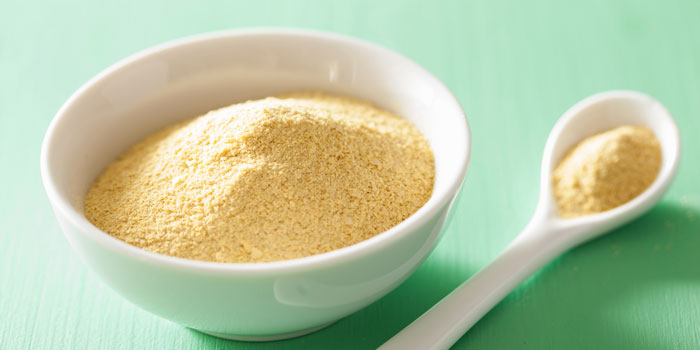
Pronounce it: yee-st
Yeast is a living, single-cell organism. As the yeast grows, it converts its food (in the form of sugar or starch) into alcohol and carbon dioxide through the process of fermentation. This makes it crucial to the making of wine and beer, as well as the process of baking (which has led to the identification of two main types, brewer’s and baker’s yeast).
Baker’s yeast is used in cookery to rise (leaven) any kind of bread, whether sweet or savoury.
Availability
Dried granular and easy-blend yeast are available from shops and supermarkets. You can find fresh yeast at bakers, health food stores or the bakery section at some larger stores. All are available all year round.
Choose the best
Fresh, dried granular or easy-blend yeast (which has finer grains than dried granular yeast), according to the recipe. Fresh yeast is reckoned to give the best flavour – it should be firm and moist, with a cream colour. Avoid any that is dark or dry and crumbly.
Granular yeast is more convenient than fresh yeast, as it keeps for longer. Easy-blend yeast doesn’t need proofing (see below) – it can be added directly to the dough mix. Fresh yeast and dried granular yeast are not suitable for bread-making machines.
Prepare it
Add easy-blend dried yeast directly to the dough mix, in accordance with the packet instructions or recipe. Dried granular yeast and fresh yeast should be tested (this is called ‘proofing’) before being added to the dough mix, to make sure they are still active. Dissolve the yeast in a bowl of warm water with a pinch of sugar, and leave for 5-10 minutes (follow the packet instructions for the exact quantities of yeast and water). If the yeast is still active, it should begin to froth up. If it doesn’t, it means the yeast is stale, and should not be used, as it won’t cause the bread to rise.
It’s important to note that, when mixing the yeast with water, the temperature shouldn’t be too high or it will kill the yeast. The optimum temperature is 38C/100F. If you don’t have a thermometer, mix 300ml boiling water with 600ml cold water, then measure out the required quantity of water to add to the yeast.
Store it
Keep dried yeast in a cool, dark, dry place, and use within its best before date – beyond this, it may fail to make the bread rise. Fresh yeast is highly perishable and should be kept in the fridge. Use within a maximum of 2 weeks, or within the use by date.
Cook it
Use baker’s yeast to rise any kind of bread, from pizza base through to rye bread.
Be the first to comment on "Yeast"